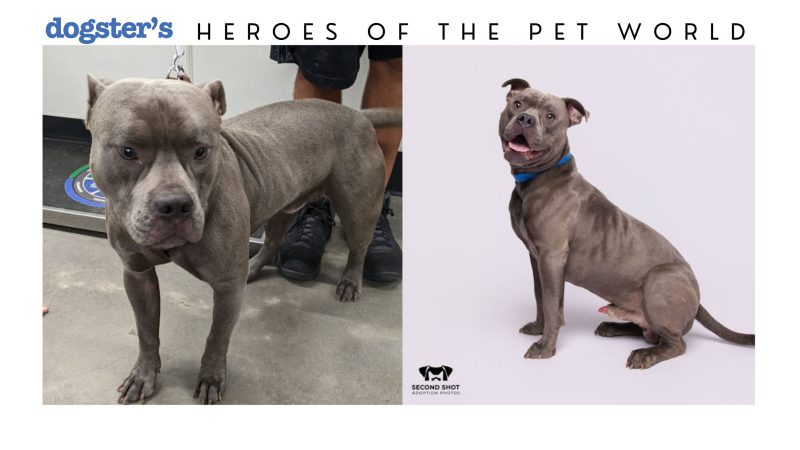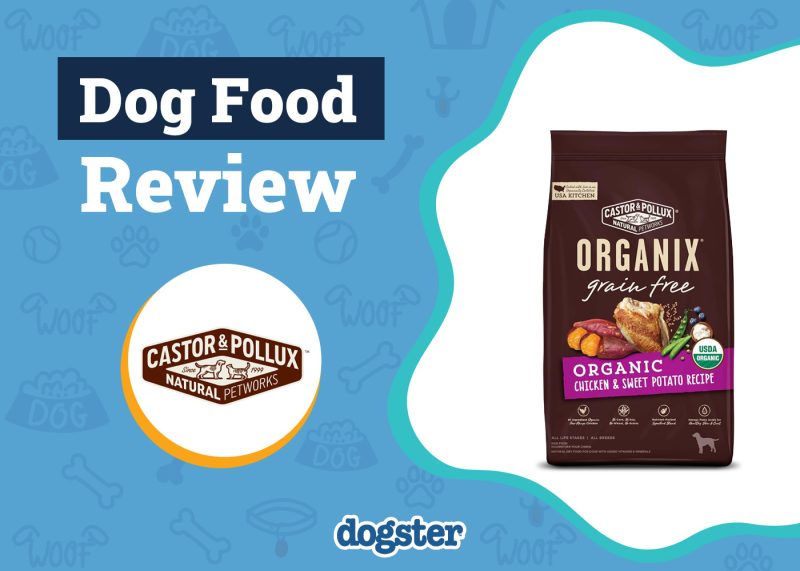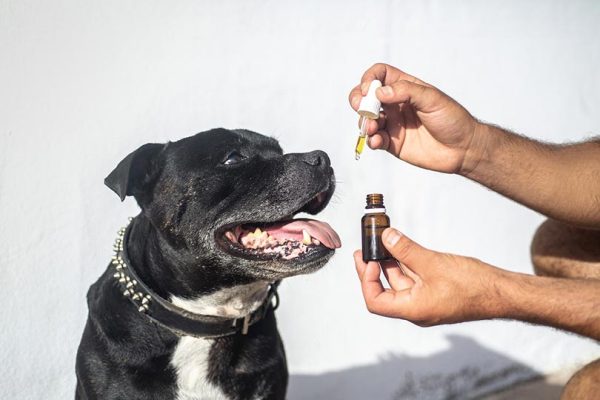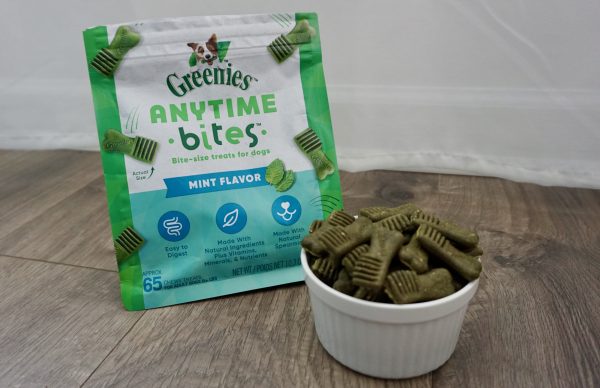In this article
We give Vet in a Box Medical Kit a rating of 4.7 out of 5 stars.

What Is Vet in a Box Medical Kit? How Does It Work?
Your dog loves going everywhere with you: hiking, camping, traveling, or simply walking in the park. But are you prepared if something were to happen? How would you care for a bleeding wound or address a broken toenail in the middle of a hike? You wouldn’t think about leaving your home without a first-aid kit at hand, and it should be no different for your dog. Getting a medical kit specifically for your dog(s), and tossing it in with your gear is a must. Vet in a Box is the go-to first-aid kit that equips you with the necessary supplies to care for your dog if an injury were to happen.
It contains the supplies required for treating the most frequent canine injuries, such as broken bones and sprains, accidental ingestion, penetrating wounds, porcupine quills, cut/injured pads, serious cuts, bleeding/broken nails, illness, and foreign objects in eye or ears. It includes a waterproof inner bag to protect its contents and a “Canine Field Medicine” book with first-aid guidelines.
Adventure Ready Brands manufactures the Adventure Dog Series Medical Kits. This company is located in Littleton, New Hampshire, and was founded in 1975. Its products are packaged in ways that are convenient and environmentally friendly. The staff takes pride in producing high-quality products and stellar customer service. Their goal is to “enjoy the outdoors in every condition,” and their mission is to “inspire outdoor adventure.” Adventure Ready Brands also embraces adaptability and change and aims to adapt and improve as the need arises.
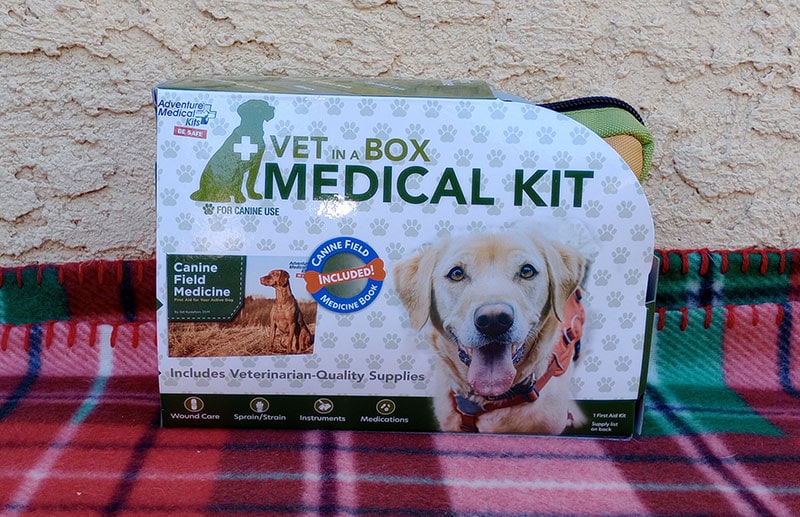
Where to Get Vet in a Box Medical Kit?
You can purchase the Vet in a Box Medical Kit directly from the website or from various online stores that sell pet supplies, medical kits, and outdoor gear. A quick Google search provides many buying options. If you enjoy searching for bargains or are seeking an in-store purchase, you can utilize the search function on the Adventure Medical Kit’s website.
- Adventure Medical Kits Adventure Dog Series (official website)
- Amazon
- Sportsman’s Warehouse
Vet in a Box Medical Kit — A Quick Look
- Small, portable, and lightweight
- Contains a field medicine book for dogs, written by a veterinarian
- Places to write your vet’s phone and emergency numbers
- Waterproof DRYFLEX ziplock bag to store supplies
- Expiration dates on medications and supplies
- Sterile supplies
- Durable
- Ziplock bag doesn’t stay closed
- Limited use
- Simple, generic medical supplies
- Basic medical kit
- May need extra supplies
- Forceps are difficult to use
Vet in a Box Medical Kit Pricing
Pricing for the Adventure Dog Series Vet in a Box Medical Kit can be seen on their website for the most up to date price and shipping directly from the website.
What to Expect From Vet in a Box Dog Medical Kit
The Vet in a Box Medical Kit arrives by FedEx in a small, recyclable brown box. The kit itself is contained within an outer cardboard box that highlights its contents and uses. The front of the box reads, “Vet In A Box Medical Kit,” and comes with the Trail Dog Medical Kit and the “Canine Field Medicine” book. There are other medical kits available in the Adventure Dog Series, and they vary by size, price, usage, and contents. Other available first-aid kits include:
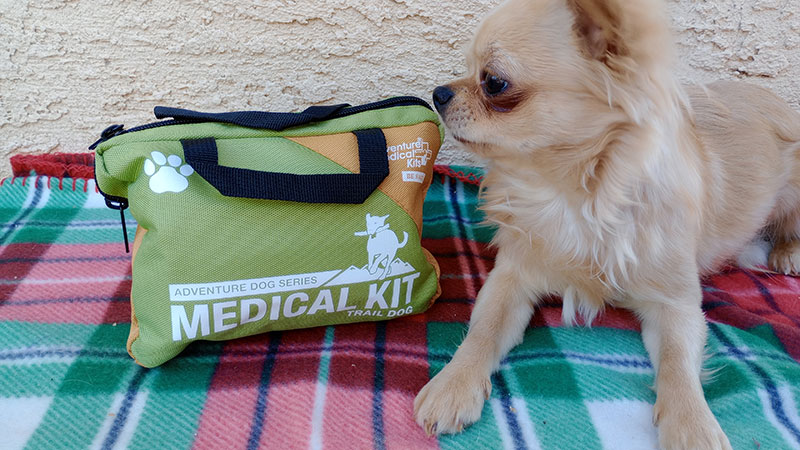
Vet in a Box Medical Kit Contents
General
- 1 first-aid bag with handles and zipper closure
- 1 DRYFLEX waterproof ziplock bag to contain supplies
Wound Care
- 2 sterile gauze dressing, 3″ x 3″, pkg./2
- 2 sterile non-adherent dressing, 2″ x 3″, pkg./1
- Conforming gauze bandage, 2″
- Irrigation syringe, 10 cc., with 18-gauge tip
- Saline wound and eye wash
- Elastic bandage, self-adhering, 2″
- Triple antibiotic ointment
- 6 antiseptic wipes
- Alcohol swabs
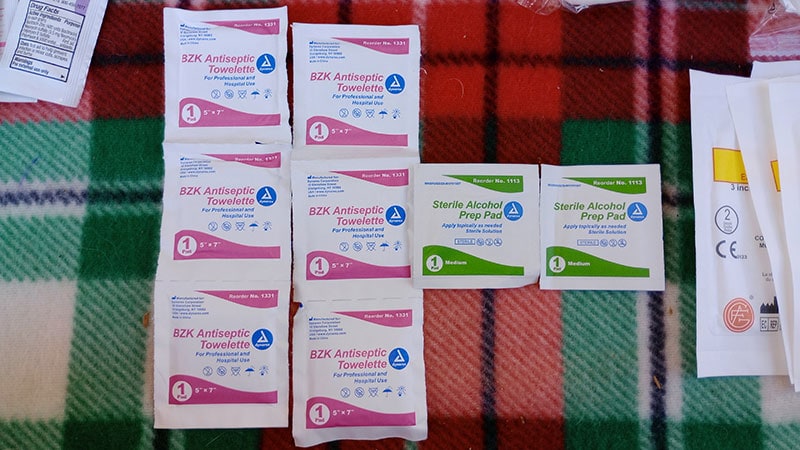
Sprain / Strain
- 1 triangular bandage (see book instructions for use as a muzzle)
Medical Instruction / Instruments
- 1 “Canine Field Medicine” book
- 1 splinter picker / tick remover forceps
- 1 pouch of hydrogen peroxide 3%, 1 oz. (to induce vomiting)
Medication
- 2 antihistamine (diphenhydramine 25 mg.), pkg./1
(Note: When giving medicine to animals, only give doses prescribed by a veterinarian.)
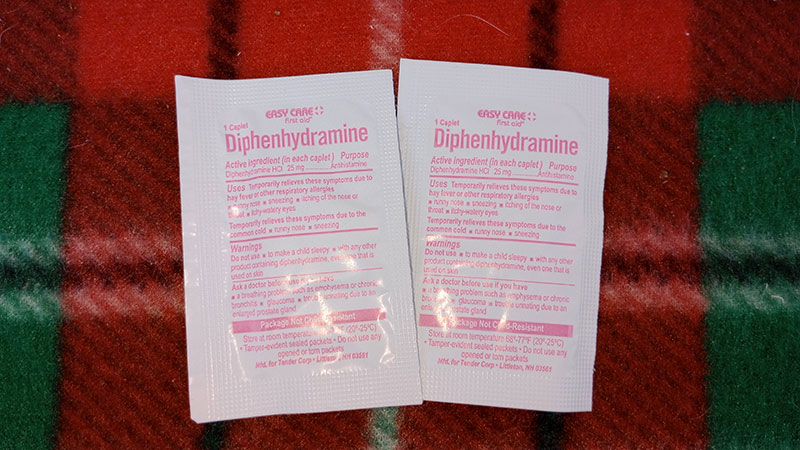
Wound-Care Supplies
All of the wound-care supplies contained in this kit are sterile.
Bandages:
- Two non-woven 3” x 3” sponge packages are included, each containing two sponges for cleaning wounds and absorbing blood and other fluids.
- The two non-adherent pads, measuring 2” x 3”, won’t stick to wounds and can be placed under bandages to protect the wound and absorb fluids (like a Band-Aid pad).
- The Easy Care first aid roller gauze bandage, measuring 2” x 4.1 yd., can wrap around the wound or injury to keep the non-adherent pad in place. It also maintains pressure on a bleeding wound and can support injured limbs or joints.
- The self-adhering elastic bandage can be placed over the gauze bandages and provides further protection to the injury by keeping it covered and clean. It can also be used to provide compression and support to injured limbs and joints. This elastic bandage sticks to itself, so bandage tape is not needed. It will not stick to your dog’s skin or fur.
Syringe:
- One 10-cc. (mL) syringe with an 18-gauge irrigation tip to flush and clean wounds with water or saline
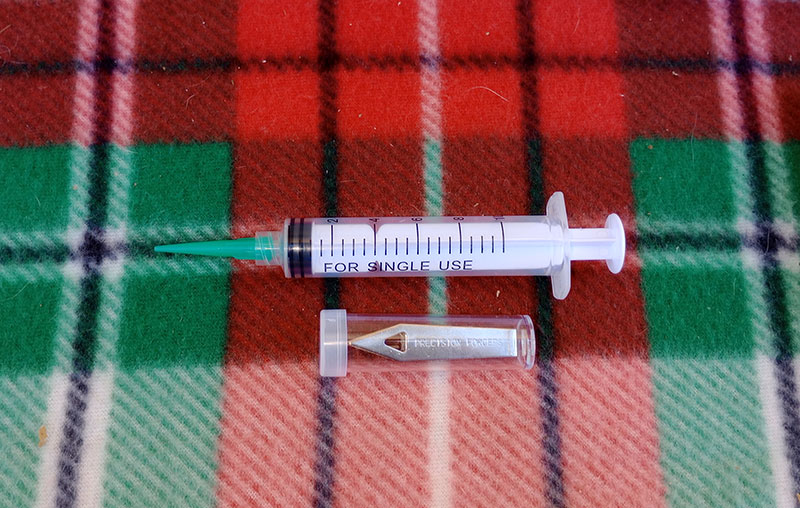
Antibiotic ointment:
- The three 0.5-gram triple antibiotic ointment packets contain the following active ingredients (in each gram): Bacitracin Zinc (400 units, Bacitracin), Neomycin sulfate (3.5 mg, Neomycin), Polymyxin B Sulfate (Polymyxin B, 5,000 units). Antibiotic ointment is used to prevent infection in minor wounds.
Antiseptic wipes:
- Six BZK antiseptic towelettes, with Benzalkonium Chloride 0.13% as the active ingredient to help prevent infection in minor wounds.
Alcohol swabs:
- Two alcohol prep pads saturated with 70% isopropyl alcohol, to clean intact skin before injections or to clean the skin around the wound (not to be used directly on wounds)
Saline wound and eye wash:
- One Easy Care first aid ophthalmic solution eyewash containing purified water (98.3%) as the active ingredient, indicated for flushing the eye to remove foreign material
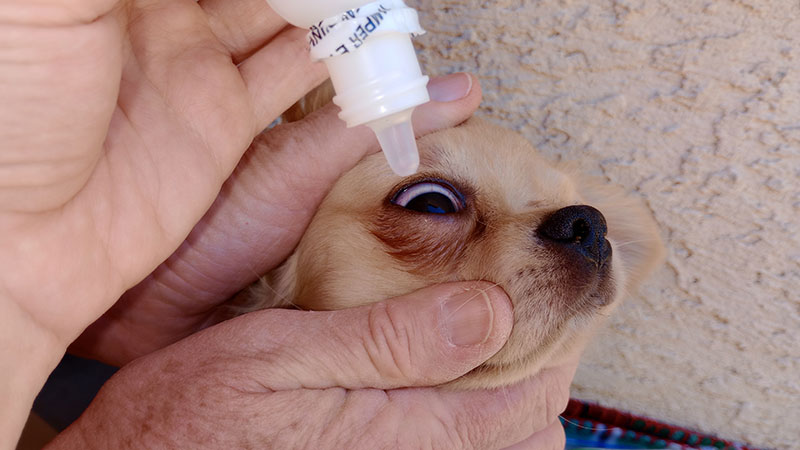
Sprains and Strains Supplies
The Easy Care first-aid triangular bandage measures 42” x 42” x 59” and is for helping your dog stabilize an injured leg. This bandage can also be used as a muzzle to prevent your dog from biting you due to the pain and stress of an injury.
Medical Instruments
Small-precision forceps are included in the medical kit for removing ticks, stickers, thorns, foxtails, splinters, and other similar foreign objects from your dog. The forceps are contained in a clear plastic vial for safety and protection. It also makes them easier to find in the medical bag.
Medications
Antihistamine
- Two Easy Care first-aid diphenhydramine pouches, each containing one 25-mg caplet of diphenhydramine HCL to be used for allergic reactions
Hydrogen peroxide
- One 30-mL (1 fl. oz.) APLICARE hydrogen peroxide 3% pouch to induce vomiting (not for cleaning wounds)
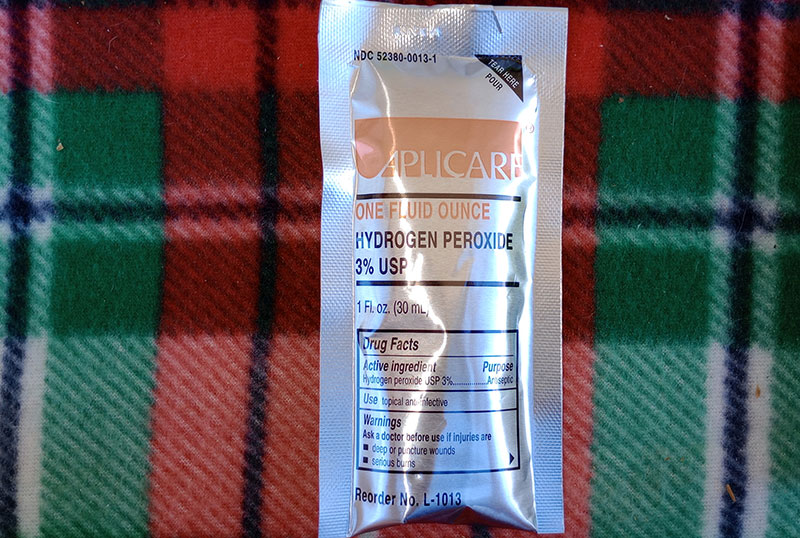
“Canine Field Medicine: First Aid for Your Active Dog” Book
Published in 2018, this field book is written by Sid Gustafson, DVM, and contains 97 pages of helpful first-aid information for dogs. This book does not replace veterinary care but is meant to be a guide in situations where medical aid can be given before getting to a veterinary office. The book is full of black-and-white images and diagrams to provide visual aids for explanations and instructions.
- Part I: Prerequisites to first aid
- Accident prevention
- Secure the scene
- Restraint and physical examination
- Examining your dog—determining the seriousness of injury and illness
- Part II: Administering first aid
- Section A: Respiratory problems
- Dogs in need of emergency CPR
- Choking
- Coughing
- High altitude trouble: pulmonary edema
- Near drowning
- Section B: Nonresponsive dog
- Coma
- Shock—circulatory collapse
- Seizures
- Section C: Wounds, bleeding, fractures, and chest injuries
- Wounds and bleeding
- Head and spinal injuries
- Chest wounds
- Lameness
- Wild animal problems
- Limp tail syndrome
- Section D: Gastrointestinal issues
- Abdominal problems
- Gastrointestinal upsets
- Section E: Eyes, ears, and mouth
- Eye trouble
- Ear problems
- Dental troubles
- Section F: Bites, stings, and poisons
- Tick and insect trouble
- Poisonings
- Snake bites
- Section G: Removal of foreign objects
- Fish hooks and line problems
- Porcupine quills
- Section H: Temperature-related exposure problems
- Exposure to cold
- Heat exposure
- Appendices
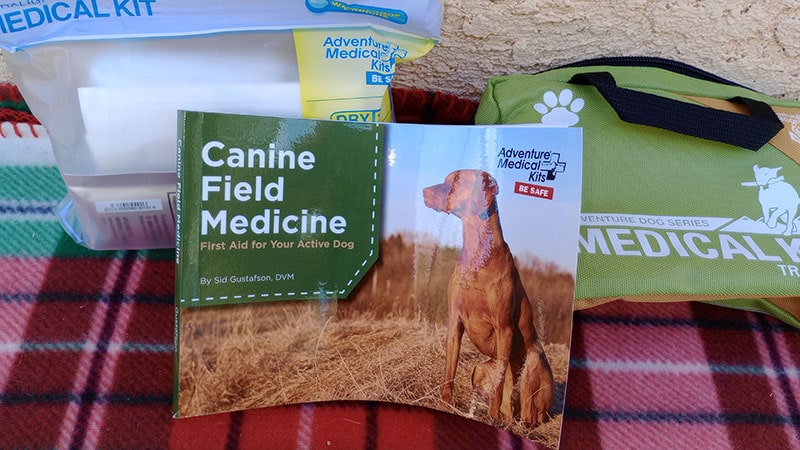
Is Vet in a Box Medical Kit a Good Value?
If you need a basic first-aid kit for your dog, this will suffice. It has a small supply of bandages, so you may need to bring extras with you if you are planning a multi-day outdoor adventure with your dog. You can register your kit online to receive information and updates about products.
To be honest, you can find these basic supplies in human first-aid kits, so it may be more cost-effective to purchase supplies at your local drugstore or pharmacy. Be sure these supplies are safe for dogs; learn more about what additional items you can include in your kit from the American Veterinary Medical Association. If you just need the “Canine Field Medicine” book, you can purchase it separately on the company’s website.

Frequently Asked Questions (FAQ)
Can this first-aid kit be used for cats?
No, it is for dogs only. Specifically, things like the hydrogen peroxide and triple antibiotic ointment should not be used for cats. Some cats may have allergic reactions and skin irritation due to the neomycin and polymyxin B in the triple antibiotic ointment. Hydrogen peroxide can cause severe irritation, ulceration, and bleeding in the stomach and esophagus of cats and should not be used to induce vomiting in this species.
What are the common uses for the Vet in a Box Kit?
The Vet in a Box Medical Kit contains first-aid supplies and instructions when out with your dog. It specifically focuses on injuries that your dog can acquire while on the trail, such as paw and nail injuries, and it includes supplies to help manage situations until you can get to a veterinarian.
What are the dimensions and weight of this kit?
The Vet in a Box Medical Kit weighs approximately 1.06 lbs. and is 7.25” long x 3.0” wide x 5.13” high.
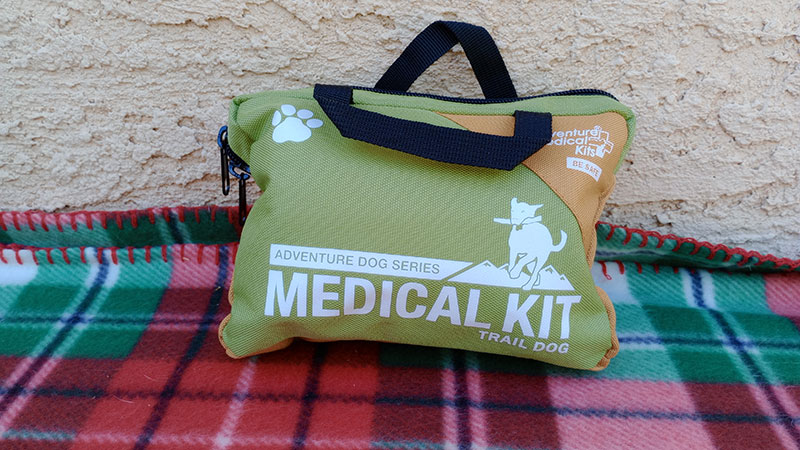
Our Experience With Vet in a Box Medical Kit
Overall, this is a nice little first-aid kit to take along if you are planning to spend a few hours away from home. It is small, compact, and lightweight enough to fit in your backpack without taking up too much space or bogging you down. The handles on the zipper pouch enable you to carry the kit easily by hand if needed. The back of the bag has areas for you to write in your veterinarian’s phone number and your emergency vet’s number for easy reference.
The inner DRYFLEX waterproof pouch is helpful to keep all the supplies dry and protected from harsh weather conditions or if you accidentally submerge it in water. I was unable to fully reseal the top of the pouch after opening it, however, because it was crinkled and distorted from being stored in the kit.
I like that the “Canine Field Medicine” book is included, just in case you need to provide some level of first-aid care to your dog. The author, Dr. Gustafson, is an outback veterinarian and does a great job of guiding you through a few medical situations that you may encounter with your dog while out in the field. I recommend reading the book and reviewing all contents when you first get your kit, so you can become familiar with suggested treatment guidelines before traveling to areas where there may be an absence of professional veterinary care. The book contains normal resting vital signs for dogs and includes pages where you can record your dog’s vital signs so you can recognize what is normal for your dog. Bear in mind that this book contains advice only and in no way overrides the care and treatment provided by a veterinarian. Always seek veterinary care as soon as you can. Acquiring additional training in pet first aid and CPR can also be helpful.
Did you know you can speak to a veterinarian without having to travel? Just head over to PangoVet. It's our online service where you can talk to a vet online and get the advice you need for your pet — all at an affordable price!

The supplies in the kit are adequate for minor wounds or injuries. If you plan to be in the wilderness or remote areas for a while, I recommend bringing along extra supplies to have on hand in case of an emergency. The Vet in a Box kit does not have bandage scissors, a thermometer, or gloves, and I recommend including these in your kit. However, the compact size of the medical kit leaves little to no room for extra supplies, so keep this in mind.
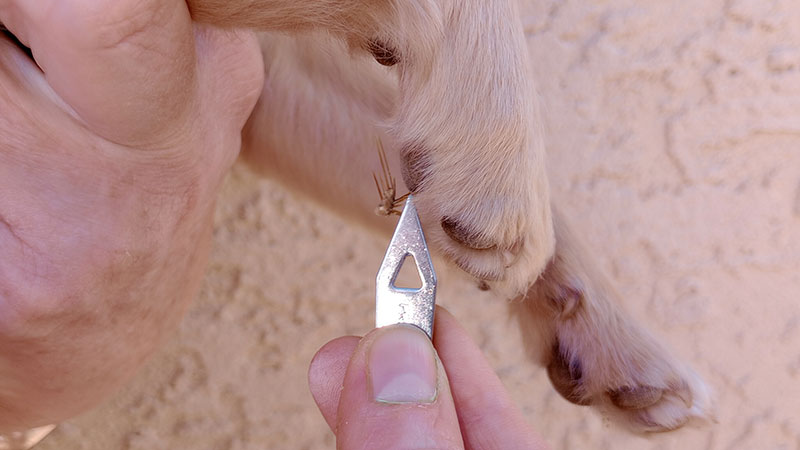
You can use the ophthalmic eyewash solution to irrigate mild wounds by squeezing the bottle to control the rate of flow. The 10-cc. syringe with an irrigation tip is also helpful to have on hand for wound-cleaning needs. Do not use the hydrogen peroxide for cleaning wounds. This can damage healthy tissues and cells, which can prolong the healing time. Flushing wounds with sterile saline or clean water is sufficient.
When I was reviewing the items in the kit, my pup, Baby the Cool Chihuahua, began limping. Investigation revealed a cactus spine in his right front paw. This was the ideal situation to try out the forceps. While I was able to remove the spine without further injury to myself or Baby, it was difficult for me to grasp and maintain a grip with the forceps because it had a smooth surface. The cactus spine kept slipping out of my grasp. I prefer forceps with serrations or hemostats (non-slip features) that are better able to grip and quickly remove pesky stickers and other foreign objects before they become bigger problems. I would recommend including one with your first-aid kit. (Baby was fine, by the way!)
Hydrogen peroxide 3% is included if you believe that your dog may have ingested something toxic. Be sure to read your “Canine Field Medicine” book to know when to correctly induce vomiting (pages 80–82), or follow a veterinarian’s instructions. Vomiting is not indicated for all poisoning cases and can sometimes do more harm than good. When in doubt, contact a veterinarian, the Pet Poison Helpline, or the ASPCA Animal Poison Control for more information (consultation fees may apply).
All medications and dosages should be reviewed and approved by a veterinarian before administering them.

Conclusion
Spending time with your dog should be an enjoyable experience. Take comfort in knowing that you can provide basic first aid to your dog should the need arise with your Vet in a Box Medical Kit. It includes supplies for wound care, sprains and strains, common medications, and instruments. Be sure to familiarize yourself with the “Canine Field Medicine” book, and always follow your veterinarian’s advice before heading out on an adventure with your pup.




